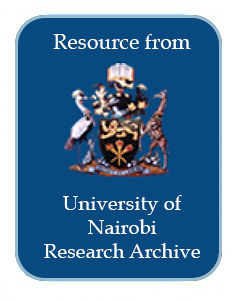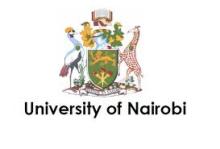Resource information
The objective of the study was to detect and identify land cover changes in Laikipia County of Kenya that have occurred during the last three decades. The land use types of study area are six, of which three are the main and the other three are the minor. The main three, forest, shrub or bush land and grassland, changed during the period, of which grasslands reduced by 5864 ha (40%), forest by 3071 ha (24%) and shrub and bush land increased by 8912 ha (43%). The other three minor land use types were bare land which had reduced by 238 ha (45%), river bed vegetation increased by 209 ha (72%) and agriculture increased by 52 ha (600%) over the period decades. Differences in spatiotemporal variations of vegetation could be largely attributed to the effects of climate factors, anthropogenic activities and their interactions. Precipitation and temperature have been demonstrated to be the key climate factors for plant growth and vegetation development where rainfall decreased by 200 mm and temperatures increased by 1.5 °C over the period. Also, the opinion of the community on the change of land use and management was attributed to climate change and also adaptation strategies applied by the community over time. For example unlike the common understanding that forest resources utilisation increases with increasing human population, Mukogodo dry forested ecosystem case is different in that the majority of the respondents (78.9%) reported that the forest resource use was more in that period than now and also a similar majority (74.2%) had the same opinion that forest resource utilisation was low compared to last 30 years. In Yaaku community, change impacts were evidenced and thus mitigation measures suggested to address the impacts which included the following: controlled bush management and indigenous grass reseeding programme were advocated to restore original grasslands, and agricultural (crop farming) activities are carried out in designated areas outside the forest conservation areas (ecosystem zoning) all in consultation with government (political class), community and other stakeholders. Groups are organised (environmental management committee) to address conservation, political and vulnerability issues in the pastoral dry forested ecosystem which will sustain pastoralism in the ecosystem.


